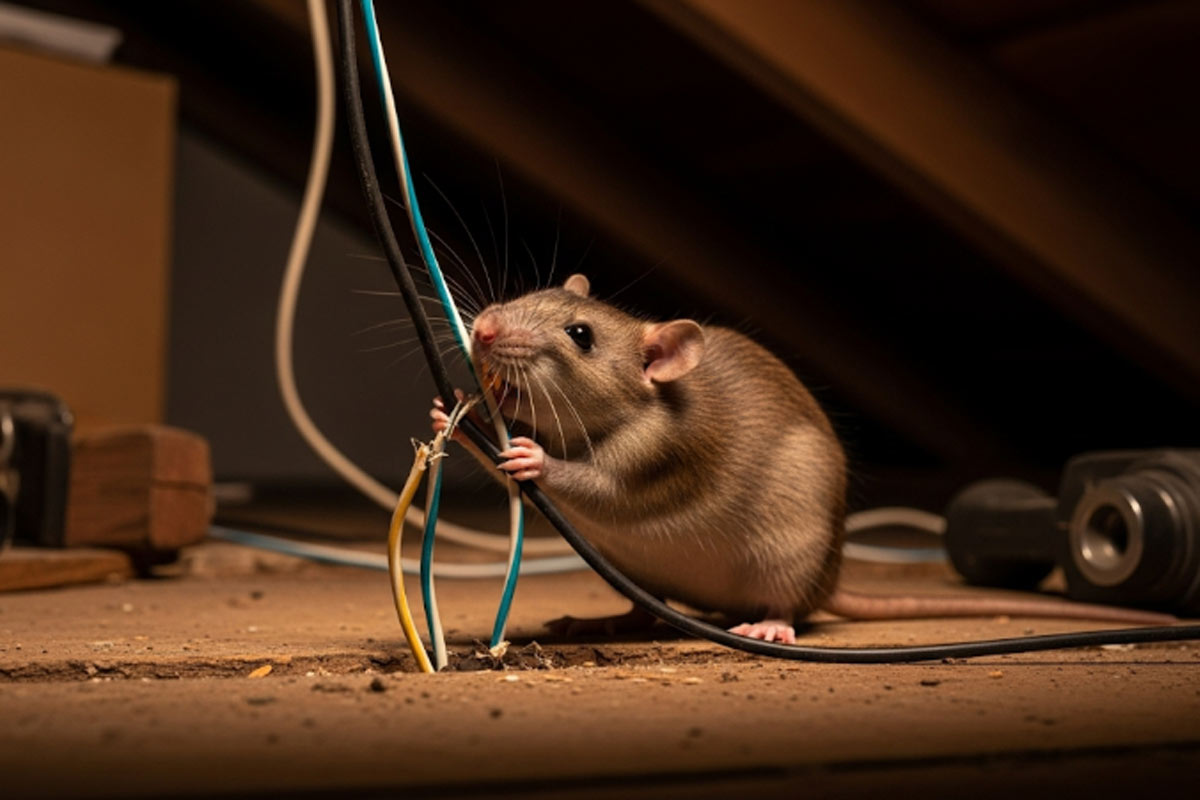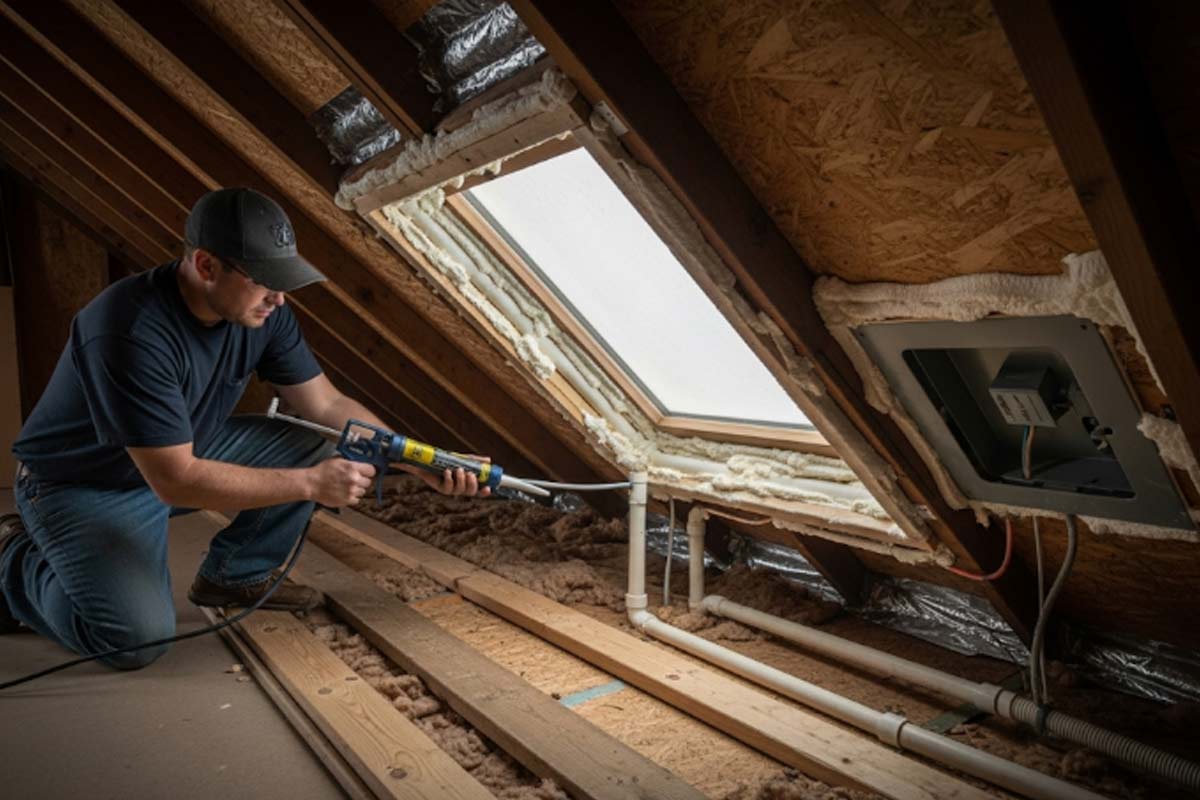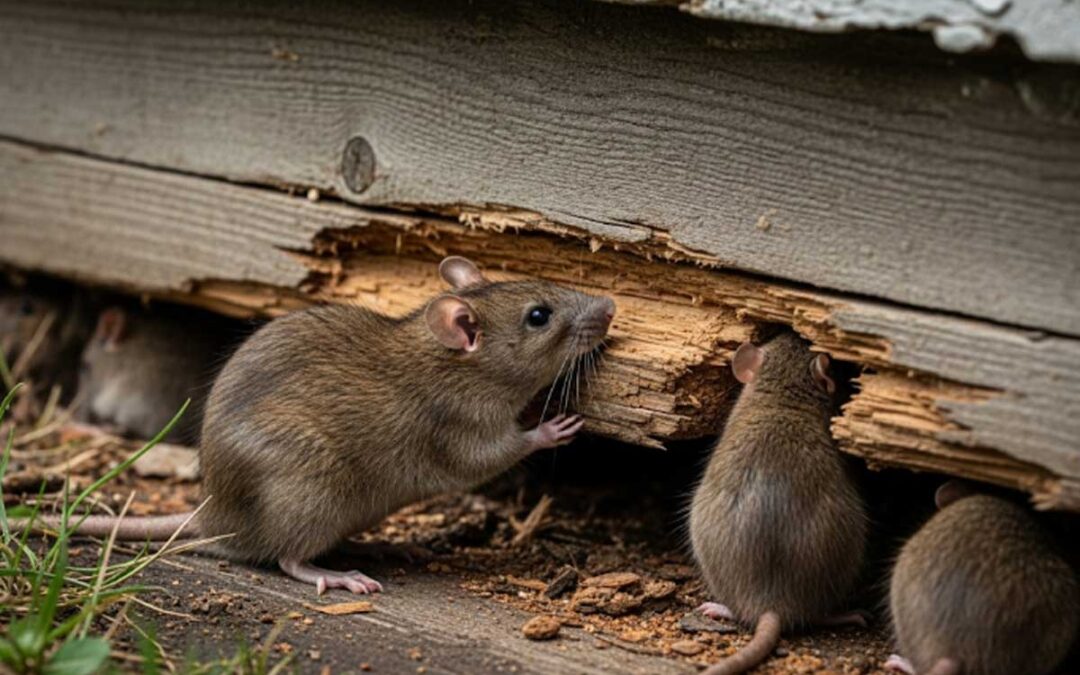What lurks above your head while you sleep? Many Canadian homes harbour unseen threats in their attics. Common attic pests often possess surprising destructive capabilities. These unwelcome guests can cause major structural problems, health hazards, and financial burdens if left unchecked. Let’s discuss the hidden dangers of attic pests, detailing specific invaders, the damage they inflict, and effective prevention strategies. Gain crucial knowledge about safeguarding their homes from these silent destroyers.
Common Attic Invaders
Attics offer a secluded, often undisturbed environment, making them ideal shelters for various creatures. These spaces provide warmth, darkness, and protection from outdoor elements, attracting numerous pests seeking refuge. Knowing who might be sharing your attic space is the first step in protecting your property.
- Raccoons
Raccoons are highly adaptable mammals often found in Canadian attics. They are identifiable by their distinctive black mask over their eyes and ringed tails. These animals are intelligent and strong, capable of tearing open vents, soffits, and even roofing materials to gain entry. Their presence is often revealed by loud thumping, scratching, and chattering sounds, particularly at night.
- Squirrels
Squirrels, especially grey squirrels, frequently seek shelter in attics, particularly during colder months or breeding seasons. These agile rodents are known for their gnawing habits. They can chew through wood, electrical wires, and insulation, creating significant fire hazards and structural weakness. Their frantic scampering noises during the day are a common sign of an attic infestation.
- Mice and Rats
Mice and rats are prolific breeders and can establish large colonies in attics quickly. These small rodents can squeeze through incredibly tiny openings, making exclusion difficult. They constantly gnaw to keep their incisors sharp, damaging wires, pipes, and wooden structures. Their droppings and urine contaminate insulation and spread pathogens.
- Cluster Flies
Cluster flies are sluggish, dark-grey flies slightly larger than house flies. They enter attics in large numbers during autumn, seeking warmth to overwinter. While they do not breed indoors or directly damage structures, their sheer numbers can be a nuisance. Their presence indicates entry points that other, more destructive pests could also use.
- Bats
Several bat species are native to Canada and may roost in attics, especially in older homes with ample entry points. Bats are generally beneficial as insect predators, but their guano (droppings) can accumulate, producing strong odours and fostering mould growth. Canadian bat species are protected, requiring specialized removal methods.
- Birds
Pigeons, starlings, and sparrows sometimes build nests in attics, particularly near vents or openings. Bird nests can block vents, creating fire risks and trapping moisture. Their droppings are corrosive and can damage building materials. Birds also carry parasites like bird mites and fleas, which can then infest the living spaces below.
- Wasps and Hornets
Attics provide excellent, undisturbed locations for wasps and hornets to build large nests. These stinging insects can be a significant hazard, especially if their nest is disturbed. Certain species, like bald-faced hornets, can be aggressive defenders of their colonies. Their presence usually indicates an easily accessible entry point from outside.
Types of Risks and Damages

Attic pests pose a variety of serious threats beyond simple annoyance. The consequences of an infestation can range from subtle deterioration to catastrophic structural failure and significant health risks. Understanding these potential damages helps homeowners appreciate the urgency of effective pest management.
- Structural Damage
Rodents like squirrels, rats, and mice constantly gnaw to maintain their teeth. This behaviour leads to significant structural damage. They chew through wooden beams, roof trusses, and support joists, compromising the structural integrity of a home. Over time, this weakens the entire roof structure, potentially leading to costly repairs or even collapse.
- Electrical Hazards
One of the most dangerous forms of damage from rodents is chewed electrical wiring. Rodents strip away insulation from wires, exposing live conductors. This creates a severe fire hazard. According to the Office of the Fire Marshal and Emergency Management in Ontario, rodent damage to wiring is a frequent cause of residential electrical fires. Such fires can spread rapidly, endangering lives and destroying property.
- Insulation Contamination and Loss of Efficiency
Pests like rodents, birds, and raccoons nest in and contaminate attic insulation with their faeces, urine, and nesting materials. This contamination not only creates foul odours but also compacts and degrades the insulation’s effectiveness. Reduced insulation efficiency leads to higher heating and cooling costs, as energy escapes more easily.
- Foul Odours and Air Quality Issues
Accumulated droppings, urine, and decaying carcasses from pests create strong, unpleasant odours in the attic. These odours can permeate into the living spaces below, significantly diminishing indoor air quality. The presence of mould, often encouraged by pest waste, further exacerbates air quality problems, potentially triggering respiratory issues for occupants.
- Water Damage and Mould Growth
Pests like raccoons and squirrels can tear holes in roofs or damage ventilation systems, allowing rainwater to enter the attic. This moisture penetration leads to water damage to wood and drywall. It also creates ideal conditions for mould and mildew growth, which can spread throughout the home, causing further structural damage and posing health risks.
- Disease Transmission
Many attic pests carry and transmit various diseases to humans and pets. Rodents can spread Hantavirus, Salmonellosis, and Leptospirosis through their droppings and urine. Raccoons are known carriers of roundworm. The Canadian Public Health Agency (PHAC) consistently warns about the zoonotic diseases carried by common wildlife. Contact with contaminated materials can lead to serious illness.
- Parasite Infestations
Pests living in attics often bring other unwanted guests: parasites. Fleas, ticks, mites, and lice commonly infest the fur or feathers of rodents, birds, and raccoons. Once the host animals leave or die, these parasites may seek new hosts, migrating into the living areas of the home and causing skin irritations, allergic reactions, and secondary infestations.
- Noise Disturbances and Sleep Disruption
The constant scratching, gnawing, scampering, and chattering sounds produced by pests in the attic can be incredibly disruptive. These noises are often most pronounced at night, directly above bedrooms, leading to significant sleep disturbance for residents. Chronic sleep disruption can negatively impact overall health and well-being.
Prevention is Key

Proactive measures are the most effective way to protect your attic from pest infestations. By implementing strategic prevention techniques, homeowners can create an environment that deters pests from seeking shelter in their homes. A combination of sealing entry points, maintaining the property, and reducing attractants offers the best defence.
- Seal All Entry Points
Thoroughly inspect your home’s exterior for any gaps, cracks, or holes. Pay close attention to areas around utility lines, vents, and chimneys. Seal even small openings (as tiny as a quarter-inch for mice) with durable materials like steel wool, hardware cloth, or expanding foam. This physical barrier is crucial to preventing access.
- Maintain Roof and Eaves
Regularly inspect and repair any damaged roofing materials, loose shingles, or deteriorating fascia boards. Ensure that soffit vents are intact and properly screened. Pests like squirrels and raccoons often exploit weaknesses in the roofline to gain entry. Prompt repairs prevent these opportunists from setting up residence.
- Trim Overhanging Branches
Keep tree branches and shrubs trimmed away from your roofline and walls. Branches provide easy access for squirrels, raccoons, and other climbing animals to reach your attic. A clear space of at least six to ten feet between branches and your home significantly reduces their ability to bridge the gap.
- Secure Vents and Chimneys
Install durable, rust-proof mesh screens over all attic vents, including gable vents and soffit vents. Cap chimneys with animal-proof screens. These measures prevent birds, bats, and other small animals from entering while still allowing proper ventilation. Ensure the screens are securely fastened and regularly checked for damage.
- Store Food Properly
While attics are not typically food storage areas, securing garbage bins outdoors and ensuring no pet food or birdseed is left accessible near the house can reduce overall pest attraction to your property. Rodents are drawn to readily available food sources, and their presence outside can increase the likelihood of them seeking shelter inside.
- Address Moisture Issues
Ensure your attic is dry and well-ventilated. Leaky roofs or condensation issues can attract pests like insects and rodents seeking water. Proper attic ventilation reduces humidity, which can also deter mould growth and make the attic less hospitable for various pests. Address any leaks immediately to prevent water accumulation.
- Regular Attic Inspections
Conduct annual or bi-annual inspections of your attic space. Look for signs of pest activity, such as droppings, gnaw marks, nests, or unusual odours. Early detection allows for prompt intervention before an infestation becomes severe. This vigilance is crucial for maintaining a pest-free environment.
Attic pests pose serious, often unseen, dangers to Canadian homes. From structural compromises and fire hazards caused by gnawing rodents to health risks from contaminated insulation and disease-carrying animals, the damage can be extensive and costly. Proactive prevention through sealing entry points, maintaining your property, and regular inspections significantly reduces risk. However, for established infestations, protected species, or extensive damage, professional intervention is necessary.
Safeguarding your home requires vigilance and decisive action against these hidden threats. For effective pest control in Barrie and surrounding areas, including Orillia, Simcoe County, and Midland, contact Mr. Pest Control: (705) 739-7378 (Barrie), (705) 326-3377 (Orillia), (705) 739-7378 (Simcoe County), and (705) 739-7378 (Midland & Area).



